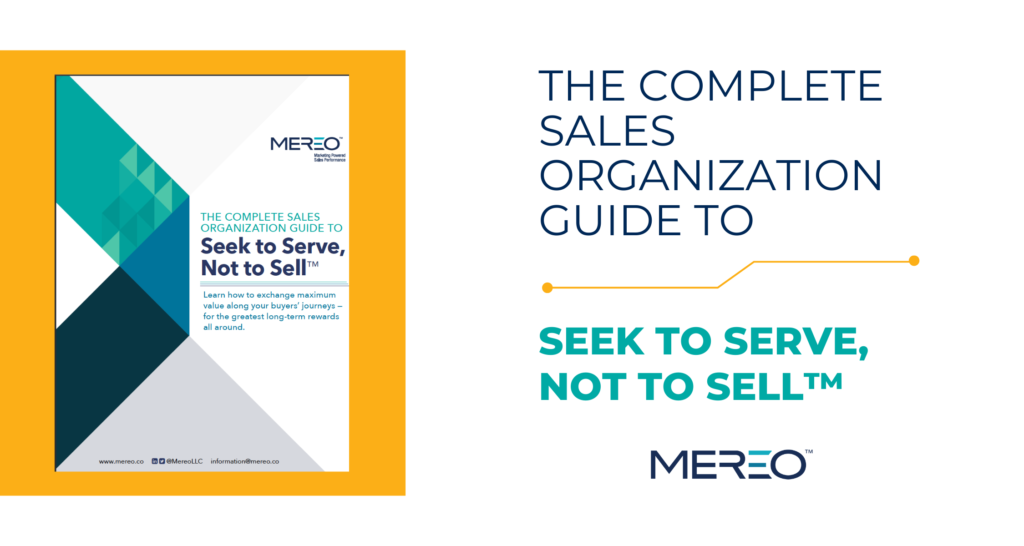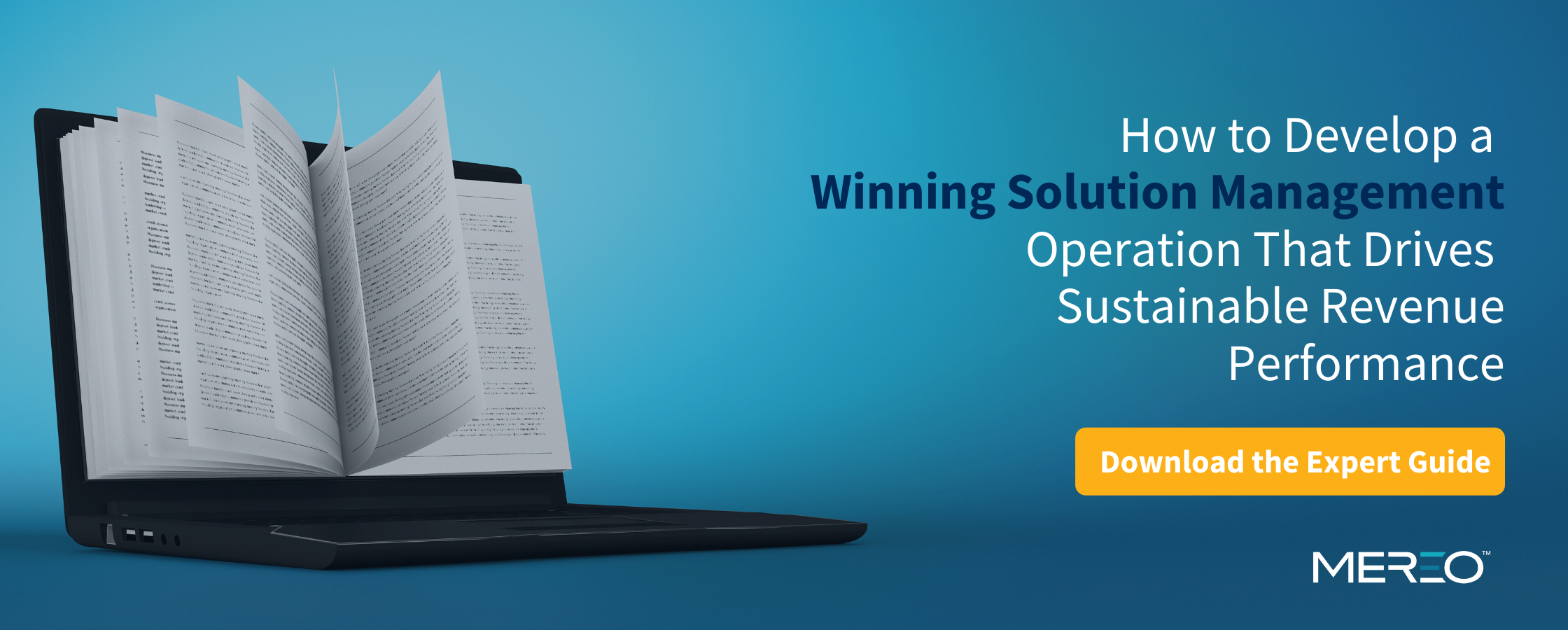Sales kickoffs present an opportunity to reset and refocus the team on what matters most. They inject energy into the start of the year and help the team improve. Training plays a big part. But by March, April or May, many leaders share the same disappointment: They invested a lot of time and money to start off the year strong — then they pick up their heads a few months later to realize they are back to where they started.
We at Mereo spoke with Paul Stansik, a member of the operations team at ParkerGale Capital, about this very issue. ParkerGale is a Chicago-based private equity firm that buys profitable, founder-owned technology companies where the firm’s operating resources can have a meaningful impact on the outcome.
Paul works closely with the sales and marketing teams within ParkerGale’s portfolio companies. He is especially focused this time of year on helping leaders not only train their teams but also build plans to remind and reinforce what matters most throughout 2022.
Paul has recently captured his insights on the Chief Reminding Officer (CRO) in his personal blog, and his writing hits home on the simple truths that all great leaders are attuned to. Growth requires learning new things. New things cannot stick without reinforcement or reminding. And if you’re a sales or marketing leader, guess what? That reminding is your job.
Discover his game-changing insights below.
How can sales leaders step into the role of the Chief Reminding Officer?
Stansik: The Chief Reminding Officer is less of a job and more of a mindset. It’s a personal commitment. To encourage behavior-change and improvement in sales teams, sales leaders can’t just train their people. They also need to pick their spots and use a variety of techniques to reinforce what needs to change — consistently and relentlessly.
The leaders who do this well look a lot like good coaches. While every coach is different, they tend to use the same three techniques: (1) feedback, (2) recognition and (3) repetition. Becoming a Chief Reminding Officer is about deciding when and where to use these three techniques with your team, and then committing to mastering them so that your training — and the improvement you’re hoping for — actually sticks.
How can the CRO role maximize sales kickoffs during the event?
Stansik: Most CROs make the sales kickoff all about sales. This is understandable. There’s a lot to get through: account and territory plans, quota and compensation changes, enablement, training. The agenda gets jam-packed rapidly. But CROs need to think a little bigger. They need to take the opportunity to link their sales kickoff to the broader story of where the company is headed and, most importantly, what the team must do differently to get there.
That question — what do we need to do differently? — should also drive the agenda of the sales kickoff. We’ll get into this later in our conversation, but the CRO needs to do some analysis ahead of time to hone-in on what’s most important for the team. What’s your biggest problem? Is it creating more leads or winning the deals that you’re involved in? Then they need to determine the root cause of what’s going on. What specific technique or process is holding you back from solving that problem? Addressing that unique gap is what the sales kickoff should be designed around. Otherwise, you run the risk of creating the equivalent of a revenue pep rally — a choreographed burst of energy that pumps people up but doesn’t change the outcome of the game.
How can the Chief Reminding Officer role maximize sales kickoffs after the event — or even after subsequent sales trainings?
Stansik: Great sales kickoffs set the standard for the year. But unfortunately, plenty of leaders forget about the next part — the more important part.
For a sales kickoff to be successful, you have to sign up for the work that comes after. If training is not reinforced, it is not actually training — it is just intellectual tourism. It’s an expensive TED Talk.
Most sales kickoffs cover a lot. They need to. But afterwards, leaders need to pick their spots and follow up. They need to adopt the mindset of an acupuncturist. You are not going to stick a thousand needles into your patient, because it is not going to help them feel better. Good acupuncturists know exactly where to put the needle.
Good CROs are no different. They’re not afraid to pick the handful of most important techniques, behaviors and processes that can make an outsized difference for their team. Narrowing your focus to those couple of spots — and giving yourself permission to de-prioritize everything else — is what it’s all about. To quote Pat Lencioni, “When everything is important, nothing is.”
Once you pick your spots, you can’t just follow up when you feel like it. You need to build a reinforcement plan and involve the rest of your team. When I work with sales teams, I ask each leader and manager to pick just one to two new things they’re going to coach, praise and reinforce after the kickoff. Then I have them ask the rest of the team to give them feedback: What’s missing? What’s unclear? What seems most important?
This feedback step is important for several reasons. First, it acts as a sanity check on what was covered in the training: Do we agree on the most important new things we need the team to focus on? Second, it gives permission to each member of the team to focus on the priorities. Third, it shares the burden of reinforcing what matters most. The CRO can’t do this alone. They need to give their team explicit permission that they want and need them to participate in telling the story of where the company is headed and reminding the team of what it’s going to take to get there.
Accountability is foundational to reminding and is often confused by leaders with nagging. How can sales leaders stay on the right side of the line?
Stansik: The difference between those two words is subtle but important. Reminding carries a spirit of agreement. It suggests there’s a contract in place. This is where we’re going. This is what it’s going to take. And I’m here to support you in making sure we get it right.
That’s one reason leaders fail — they do not take the steps to create that agreement. Agreements require two-way dialogue. They can’t be dictated. First, leaders must set clear, targeted standards. Then they need to support their team to meet those standards. With that, leaders will have earned the right to provide targeted and thoughtful reminding when their people fall short of the standards.
Many leaders fret about ROI after the sales kickoff or a sales training. Behaviors and change are not always so simple to track and measure. Where are sales leaders’ focus better spent?
Stansik: Metrics should help you close the gaps in your business. I get a little scared when sales leaders open their Salesforce and I see a wall of KPIs and dashboards. Imagine if you got into your car and your car’s dashboard looked like that —you would be too distracted to see where you were going.
CROs should focus on metrics that help them answer two questions: (1) Are you giving yourself a chance to hit this quarter’s goals, and (2) are you setting your team up for future success? Question 1 is about the health of your pipeline and your conversion rates. Question 2 is about how good you are at producing leads.
At any given time, one of those two is a bigger problem than the other. Leaders need to be honest with themselves and ask which it is. That question should become the focal point for everything — which metrics they pay attention to, what they train their team on and, yes, how they structure their sales kickoff.
What marks the difference between good sales leaders and great sales leaders?
Stansik: Great leaders are productively paranoid. They maintain a healthy anxiety. They’re like a lighthouse constantly scanning for the answers to three questions:
- Do people know what they are supposed to do? (I.e., training.)
- Do people know why? (I.e., motivation.)
- Are they doing it? (I.e., reminding.)
Yet most leaders under-communicate. There’s a common fear among sales leaders that they will come across as overbearing or pedantic. Many think: I shouldn’t tell them what to do. These are high-paid, high-functioning people who know how to do their job. That’s true — great leaders trust their teams. But they also know, as author George Bernard Shaw once said, “The single biggest problem in communication is the illusion that it has taken place.” They strike that balance between creating autonomy for their teams while sharing an inescapable stream of reminders about what matters most.
Good CROs have high standards. But the best also commit to over-communicating their standards and supporting their teams in meeting them, all the while holding people accountable if and when they fall short. That’s what being a great leader — and being a Chief Reminding Officer — is all about.
Make Your Sales Kickoff Count
Connect with Paul Stansik on LinkedIn or follow his blog on Medium for more Chief Reminding Officer insights. Touch base with our Mereo revenue consultants to learn more about how we are supporting organizations in their 2022 sales kickoffs for sustainable outcomes.












